How to remove the door of a Samsung washing machine?
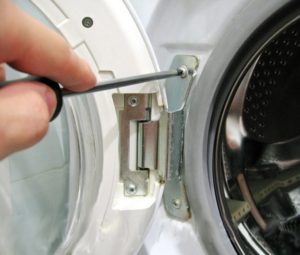 If the washing machine suddenly stops closing or displays a code on the display indicating problems with the lock, then there is no need to immediately run to the service center. Almost anyone can independently remove the door of a Samsung washing machine and diagnose the locking mechanism. You just need to act carefully and understand the intricacies of how the lock works on the machines. Step-by-step instructions will help with this.
If the washing machine suddenly stops closing or displays a code on the display indicating problems with the lock, then there is no need to immediately run to the service center. Almost anyone can independently remove the door of a Samsung washing machine and diagnose the locking mechanism. You just need to act carefully and understand the intricacies of how the lock works on the machines. Step-by-step instructions will help with this.
Dismantling instructions
You can try to repair the door by weight, but it is better not to complicate the task for yourself. It is much easier and more convenient to first remove the hatch from the end along with the hinges and slowly check the structure for damage and malfunctions. This is done quickly.
- Loosen the outer clamp on the rubber cuff of the hatch.
There is no need to remove the cuff from the hatch: pulling the elastic band back is difficult and time-consuming!
- Carefully tuck the rubber band into the drum.
- Unscrew the bolts holding the hinges using a Phillips screwdriver.
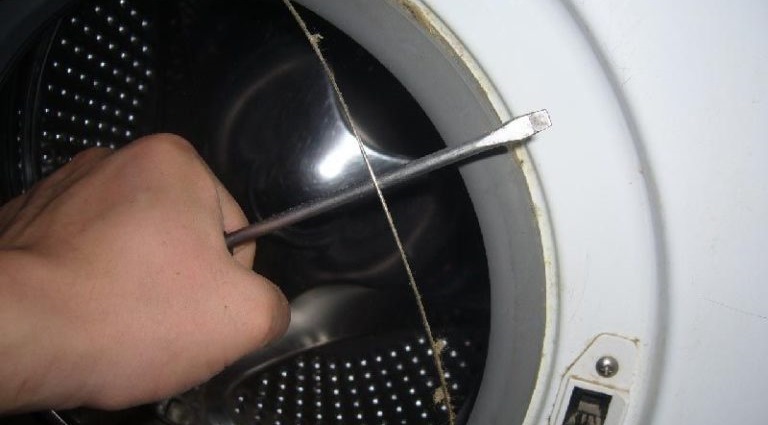
That's not all. In addition to the bolts, the door is also held in place by special plastic clips in the form of hooks. Therefore, it is necessary to raise the hatch by 4-5 mm, and then pull it away from the machine. There should be no difficulties - the door will “leave” the grooves and remain in the hands of the master.
Why remove this element?
There is no need to start repairs right away. Before unscrewing the door, you need to study its design and the electrical circuit of the washing machine. As a rule, most Samsung washing machines have a standard device, but it is better to play it safe and first study the technical documentation.
You should also try to determine the cause and nature of the malfunction before disassembling. Practice shows that the door most often breaks due to the following breakdowns:
- glass burst;
- the lock jams or does not work (the door does not close or open);
- hinges sag;
- the support on the hinge broke.
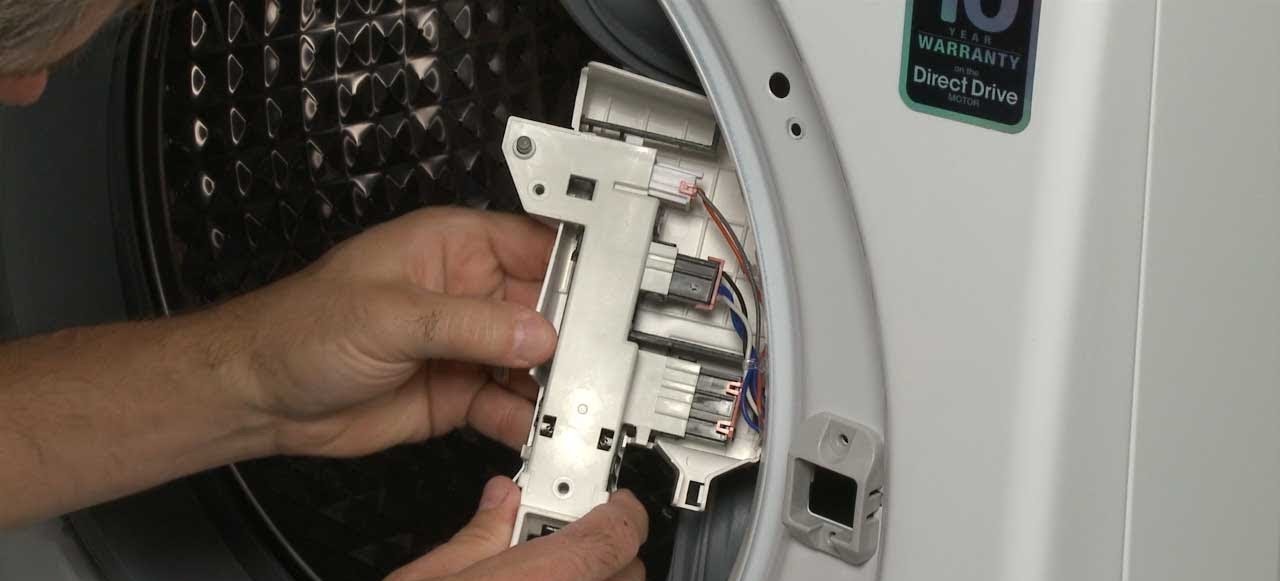
If there are no visual problems with the glass, hinges and locking mechanism, then the UBL has probably failed. The hatch locking device is an electronic lock that additionally protects the door from accidental opening during the washing process. You can more accurately determine the cause of the malfunction using typical symptoms.
The fixing elements are broken
More often than not, problems with the locking mechanism prevent the door from closing tightly. More precisely, the latch lever becomes deformed during careless or too long use, which leads to the appearance of unevenness and bevels. All this prevents the door from locking into the provided grooves. The problem is fixed as follows: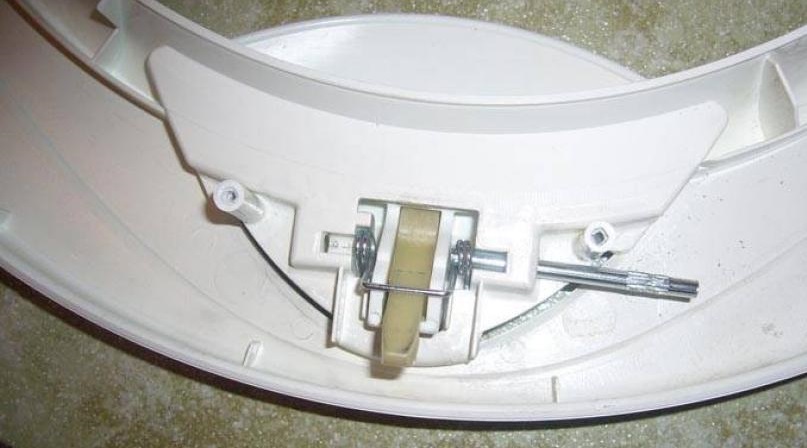
- the door is removable;
- the hatch is placed on a flat surface with the latch facing up;
- use a file to grind off all the irregularities on the latch;
- the latch is treated with graphite lubricant (for preventive purposes);
- the door is installed on the body.
Do not hang wet things on the hatch door and allow children to “ride” on them!
Often the door does not close tightly due to sagging hinges or loose external fastenings. In this case, it is necessary to adjust the position of the hinges. But you will have to act by eye - tighten the fasteners until the latch fits into the groove.
Glass damaged
If the glass on the door is cracked, then there will be no problems with diagnostics - you can immediately begin repairs.After removing the hatch from the body, we get to work. It is important to understand that operating a “broken” machine is highly discouraged: if the seal is broken, there is a high probability of leakage and electric shock.
Replacing glass is also not an option, since this option is available for single models. Therefore, the user has only two options: buy a new machine or seal the gap. The second method is cheaper, but will require some steps.
The crack is sealed according to the following instructions.
- Secure the film on the outside of the glass with tape, avoiding voids and cracks.
- Apply reinforcing tape to the inside.
- Mix resin and hardener in a ratio of 6 to 4, adding EDP glue. You should get a homogeneous mass, similar to liquid sour cream. If the composition is too thick, it is recommended to heat it in a water bath, stirring regularly.
To seal cracks in sunroof glass, it is better to use epoxy resin, as tape and sealant give short-term results.
- Fill the crack with the prepared mixture.
- Leave for a day.
- Remove the polyethylene and sand the glass.
It is not recommended to use tape and sealant instead of epoxy resin solution - they do not last as well and give short-term results. But you need to strictly observe the proportions. Otherwise, the “protection” will not last long.
Opening mechanism
When the door handle is damaged, the sequence of actions will be completely different. After removing the hatch, you will have to tighten all the bolts around the perimeter with a screwdriver, halve the door and remove the glass. Next we proceed to repairing the support:
- drill a hole 3.5-4 mm;
- file the nail down to the depth of the hole;
- heat the nail with a burner for 1-3 minutes;
- insert into the hole;
- We wait for it to harden and check the integrity of the loop.
It is much easier not to repair the door rather than to have problems closing it. You just need to follow the operating rules, carefully close the hatch, do not pull the handle or hang on the door. Otherwise, you will have to constantly deal with wear of parts, sagging hinges and other troublesome breakdowns.
Interesting:
Reader comments
- Share your opinion - leave a comment


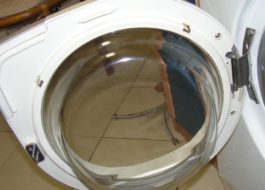
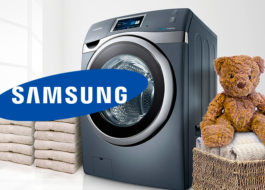
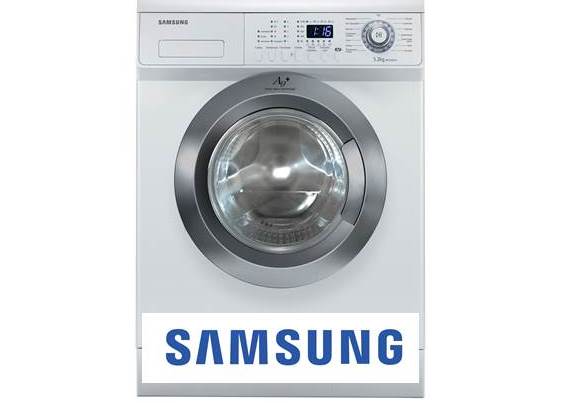

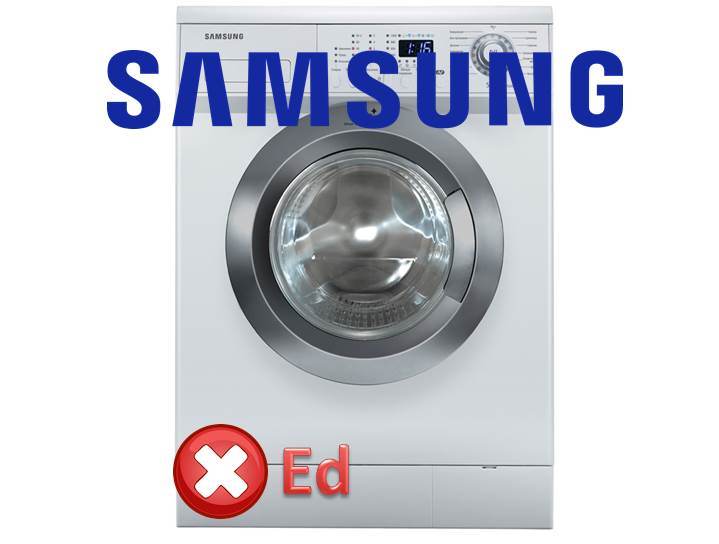














Add a comment